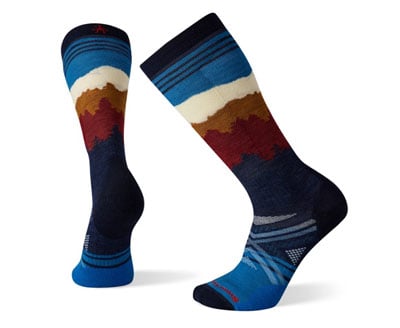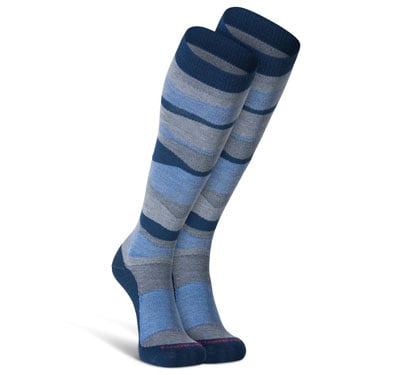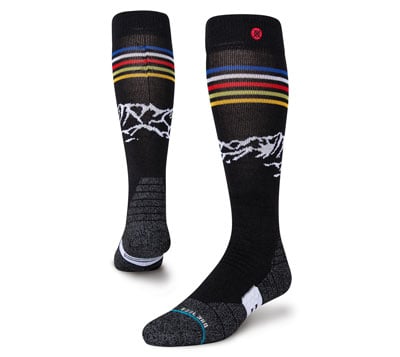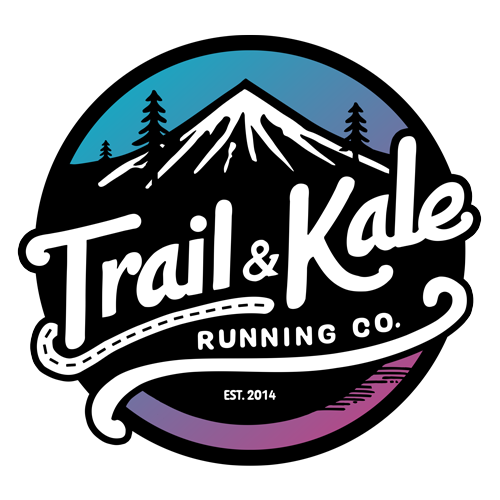In this buyer’s guide, we’ve picked out the best ski socks, by brand (including Smartwool Ski, Icebreaker, Darn Tough, and Bridgedale) so you can make an informed choice when it comes to buying the right pair for you.
Whether you’re into skiing, snowboarding or other snowsports such as snowshoeing, having a good pair of warm, comfortable, durable socks is going to make a big difference to your enjoyment of your chosen activity.
Our men’s and women’s ski sock buyer’s guide also explains what features to look for when choosing, the pros and cons of different types of sock weights (or thicknesses), and the materials used.
We’ll also go over why you may want to consider socks with specific features such as heated socks, compression socks, or ultra-thin socks, and why socks made with Merino wool are consistently popular among skiers and snowboarders alike.
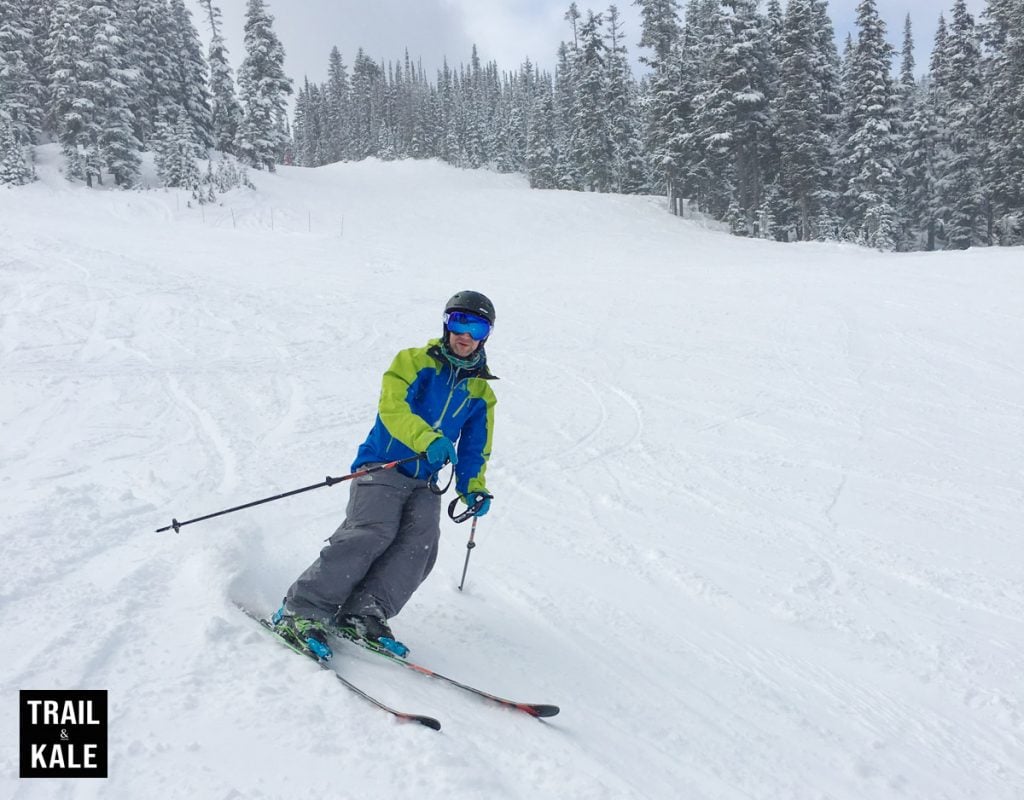
The Best Ski Sock Brands
Smartwool Performance Ski Socks
- Style name(s): Performance Ski
- Thickness / cushion options: Zero, Targeted, Light and Full
- Primary material: Merino wool
- Cost: $25 – 27 at Zappos
These Smartwool ski socks feature an open mesh pattern on top of the foot, which helps to reduce construction and keep toes warm, an elastic arch for a locked-in fit, and of course, smoothed-out toe seams for fit and comfort.
Darn Tough Socks
- Style name(s): Over The Calf Ski and Snowboard Sock
- Thickness / cushion options: Ultra-Lightweight, Lightweight, Midweight
- Primary material: Nylon / Merino wool
- Cost: $26 – 29 at DarnTough.com
Similar to the Smartwool socks, Darn Tough socks are very popular on account of the quality and features they have incorporated into their knit and designs.
These USA-made Merino wool socks feature their ‘true seamless toe’ fit, padded shin cushioning and a fine gauge knit for excellent durability – which they guarantee for life.
The midweight socks option features an underfoot cushion, whereas Lightweight and Ultra-Lightweight socks have no cushion.
Icebreaker Ski Socks
- Style name(s): Icebreaker Merino Ski+ Over The Calf Socks
- Thickness / cushion options: Ski Light, Ultralight, or Medium
- Primary material: Merino wool
- Cost: $24 – 28 at Zappos
Icebreaker ski socks are another great brand if you’re looking for high-quality Merino socks for breathability, warmth and durability.
These socks feature support around the Achilles Heel, instep and ankle, and seamless toe closure.
While Icebreaker doesn’t offer quite the range of jazzy sock designs, the technical features and performance of these socks, whether you go for the Icebreaker Ski Light, Medium or Ultralight, together with Icebreaker’s lifetime guarantee, make them a popular choice.
Fox River Ski Socks
- Style name(s): Over-The-Calf
- Thickness / cushion options: Lightweight, Medium Weight
- Primary material: Merino wool / Nylon / Acrylic depending on style
- Cost: $17 – 26 at FoxSox.com
Fox River Ski Socks are made in the USA and offer a range of different blends and styles of in Ultra-Lightweight, Lightweight and Medium Weight thickness / cushion options.
Like other high-end ski sock options on this list, Fox socks have flat toe-seams, padding in the shin, are sweat-wicking for moisture management and have vented panels with reinforced heel and toe areas.
With a slightly lower average price per pair than other socks, Fox Socks are great value if you’re on a budget.
Bridgedale Ski Socks
- Style name(s): Bridgedale Ski
- Thickness / cushion options: Lightweight, Midweight
- Primary material: Nylon / Merino wool
- Cost: $26 at Backcountry.com
British sock brand Bridgedale have been making excellent hiking and ski sock styles for more than 40 years, and their socks have been tried and tested in the most challenging environments all over the world.
Their lightweight and midweight ski socks are made with a nylon-Merino blend and feature excellent toe, shin and underfoot cushioning.
Stance Ski and Snowboard Socks
- Style name(s): Stance Snow OTC Socks
- Thickness / cushion options: Medium
- Primary material: Polyester / Nylon / Merino wool, depending on style
- Cost: $20 – 30 at Stance.com
Stance is known for their fun sock designs as well as the super soft feel of their ‘Feel360’ socks, which are made with a tight knit for durability, and feature a lifetime guarantee against rips and tears.
Stance ski sock designs vary in blend, some are made with a majority of Merino wool, however you’ll find that most styles have more polyester/nylon with a small amount of Merino, and are of medium thickness and cushion, making them well-suited to snowboarders in particular.
FITS Ski Socks
- Style name(s): FITS Ski
- Thickness / cushion options: Ultra Light, Light, Medium SKi
- Primary material: Merino
- Cost: $22 – 26 at Amazon.com
The ‘Light Ski’ is FITS’ bestselling lightweight ski sock, featuring cushioning in the toe box, heel and shin, this is a high-performance ski sock with a little extra padding in those areas and a super-fine knit, using suit-grade Merino wool.
The ‘Ultra Light’ is a very thin sock, which may appeal if you have snug boots or don’t need the extra cushion.
Buyer’s guide to choosing the best ski socks for you
When you wear a good pair of ski socks then you shouldn’t even know you have them on. All good ski socks should have the following features:
- Durable, comfortable and sweat-wicking fabrics
- An ergonomic fit design, to ensure they’re snug to your feet with no loose areas or movement
- Over-the-calf length, to sit above the top of your boots
- A reinforced, flat or seam-free toe
- Good ventilation to help them stay breathable and dry quickly
Depending on your preference, you may also want added support in the arch and ankle areas, and padding on the shin, heel and toe areas.
This type of padding is usually found on most ski socks when bought in the lightweight and medium-weight options.
Ultra-lightweight versions tend to be very thin ski socks with minimal or no cushioning.
Generally, the thinner the sock, the better if you’re looking for the best possible contact with your ski boot, and responsiveness when you ski. Many resort skiers, therefore, choose lightweight socks.
Full or medium-cushioned ski socks are better for worn-in boots that may fit looser than new boots. They may also be a better option for ski touring or telemark skiing, as the repetitive motion of uphill hikes can mean you’ll appreciate more padding as the socks can wear thinner over time.
As well as ski touring and telemark skiing, a thicker sock may also appeal if you’re a snowboarder, as snowboard boots typically have a looser fit than ski boots.
The discomfort and issues you may face as a result of buying cheap ski socks from brands you haven’t heard of are numerous (holes, wrinkles, rubbing, sagging, itching, lack of breathability, numb toes… we could go on).
For these reasons, it’s worth making sure you look after your feet by buying some quality socks from a reputable brand, that will be enjoyable to wear and should last you many years and miles, rather than the cheapest pair available on Amazon.
Expect to pay between $25 and $30 per pair of socks – and remember that a good pair of socks can be worn more than once between washes so you don’t need seven pairs if you’re planning a week of skiing!
Why are Merino wool ski socks so popular?
Merino wool is naturally breathable, odor-resistant, soft and comfortable.
These properties make it a popular premium material for outdoor apparel, including base layers, shirts, underwear and socks. To learn more about Merino sheep and their wool, click here.
When used to make socks, Merino is almost always blended with some man-made fibers, such as nylon, as well as Lycra / Elastane / Spandex to help with elasticity and shape retention. This is usually described by sock brands as a ‘Merino wool blend’.
There are also some excellent socks out there made with man-made polyester / nylon fibers, which offer similar breathability and a soft feel. So the choice of materials really depends on your preference.
The sock material blend can vary between sock style, knit pattern and thickness, so if you have a particular blend preference then read the tech specs on the product page for your chosen socks to ensure you’ve selected the right blend.
How to find the warmest ski socks for you
The best way to ensure you have warm ski socks to stop your feet from getting cold and even numb when skiing or snowboarding is to ensure you’re wearing well-fitting ski or snowboard boots and socks that provide full contact between your foot and the boot.
This will offer performance benefits through greater responsiveness and energy transfer from you through your boots to your skis or board.
Perhaps counter-intuitively, wearing thicker socks than necessary can mean you over-tighten your boots to get that snug fit, and the compressive effect of the thick socks can restrict circulation, which will contribute to having cold feet and sensations such as tingling in your toes.
The difference between men’s and women’s ski socks
Socks sold as women’s versions tend to have a narrower heel and be overall slimmer socks. They also generally have a slightly shorter length than the men’s versions.
Other types of ski socks
If you tend to get cold feet you may be considering heated ski socks. These are available but tend to be significantly more expensive than regular ski sock options.
Before you splash out on a pair of heated socks, we suggest you first ensure you’ve tried changing your sock weight.
For example if you’ve been wearing thicker socks, try wearing good-quality thin (lightweight or even ultra-lightweight) socks and see if that actually results in you getting warmer feet when skiing, for the reasons described above.
Shorter-length socks are also available, however, unless you are looking for socks to wear Nordic (cross-country) skiing or for snowshoeing, stick to over-the-calf socks to ensure they’re long enough to sit above the top of your ski boots.
For more ski gear buyer’s guides and reviews, including our guide to what to wear skiing, head over to our snowsports homepage.
